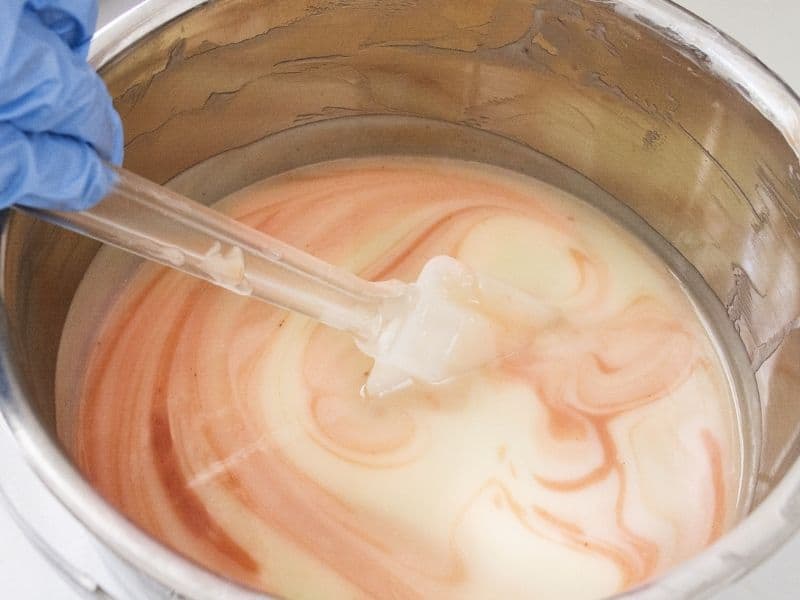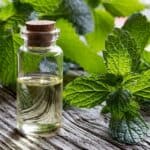When learning a new skill or hobby you often come across new words and have to try and figure out what they mean as you go. In soap making, one of those words is ‘trace’. So, what does trace mean in soap making?
Trace is the point at which the oil and lye mixture is no longer at risk of separation. This means the ingredients have been blended and thickened to create a stable emulsion.
When trace is achieved, the soap can be poured into molds and left to set. Soapmakers use trace as a way to ensure their soap is of consistent quality. If they don’t reach trace, the soap may not be fully mixed and could end up with lumps or streaks.
Let’s take a closer look at what this means.
What is ‘trace’?
Soap making is a long and complicated process. If you have ever to the soap makers, then you must have heard the word ‘trace’ as they use that a lot. Wondering what does this word mean?
Well, you are not alone. Many people, who want to start making soap, often get confused by this term. By the term ‘trace’, the soap makers mean a particular point when the soap has perfectly blended and thickened.
When the soap makers use this term they mean that the soap has reached the point where it can have a stable emulsion. This is often called a point of no return as from that point the lye and the oils in the soap cannot get separated.
The lye water and oils have been properly emulsified. The total time taken for the soap’s trace can depend on different factors.
How to identify trace in soap making
Now that you know what trace is, it is important to identify it in your soap making process. There are a few ways to do this.
One way is to check the consistency of the soap mixture. When trace is reached, the batter will thicken and be more difficult to stir.
When the soap reaches trace the consistency should be somewhere between cake batter and pudding with no signs of oil streaks within the mixture.
This is also the ideal time to add in any type of additives that you plan on using. At this thickness, whatever you add should stay suspended within the mixture rather than sinking to the bottom.
Importance of trace in soap making
Trace plays a vital role in the process of making soaps. As said before, trace means emulsification of the lye water and the oils.
Unless and until the soap reaches its trace, you cannot pour it into the mold.
Before the soap reaches the point of complete emulsification, the oils haven’t started saponification yet and the whole mixture is not totally emulsified.
Without the soap reaching the point of trace, you cannot proceed as the soap will not set up properly as it should. There can be some pockets of oils that remain unsaponified. It can cause skin rashes and irritation too.
Hence, it is very important to ensure that the soap has reached the point of ‘trace’ in order to proceed.
How to speed up the trace time?
Generally, people use their hands for stirring the mixture of soap to emulsify the oil and lye. You can use a stick blender for bringing your soap to trace faster.
If you want to speed up the trace time of your soap making process, then you are at the right place. There are some ingredients that can help in speeding up or accelerating the trace. These ingredients are:
Essential oils: Yes, you can use essential oils in the soap for better fragrance as well as to enhance the benefits of your soap. It also helps in speeding up the trace time. Essential oils, especially the clove oil can help in speeding up the process. You can also use any essential oils that contain clove oil in it.
Floral fragrance oils: Most of the soap makers use floral fragrance oil to give a beautiful and soothing fragrance to the soap. It can also help you in speeding the trace time. Applying some floral fragrance oil can help you to reach the point of trace faster.
Honey: Another ingredient that can be quite useful for speeding up the process of soap making by accelerating the trace time is honey. It can be also great for the skin if you add a bit to the soap. Honey, generally, doesn’t add to the fragrance. But can help in keeping your skin plump and well hydrated.
Besides these ingredients, some other factors too play a huge role in speeding up the trace time. These are:
Temperature: One of the factors is temperature. Higher temperatures can help your soap to reach the point of trace faster. On the other hand, if the temperature is low, then it can take more time to reach the trace point.
Water: Another factor that plays an important role in speeding up the trace time is water. Lesser use of water means your soap will reach the trace time faster. Of course, if you use more water, it will make the process of reaching the trace point slower.
Frequently Asked Questions
Common questions asked about the meaning of trace in soap making.
Trace means the point when the soap has perfectly blended and thickened.
If the soap doesn’t reach trace, it will not set up properly and can cause skin rashes and irritation.
You can use a stick blender or essential oils like clove oil to help in speeding up the trace time.
Temperature, water and type of ingredients used all affect the trace time.
Trace means the soap has perfectly blended and thickened. Trace oil means the oils in the soap have reached their saturation point.
Conclusion
Now, you have a complete understanding of what trace is in soap making and how you can speed that process up. As you can see, trace is one of the most important parts of the process of making soap.
Without that, no one can make the soap in the right way. So, make sure you follow every step to let the soap reach the trace point.
You can use the above-mentioned tips to accelerate the trace time to speed up the process.






